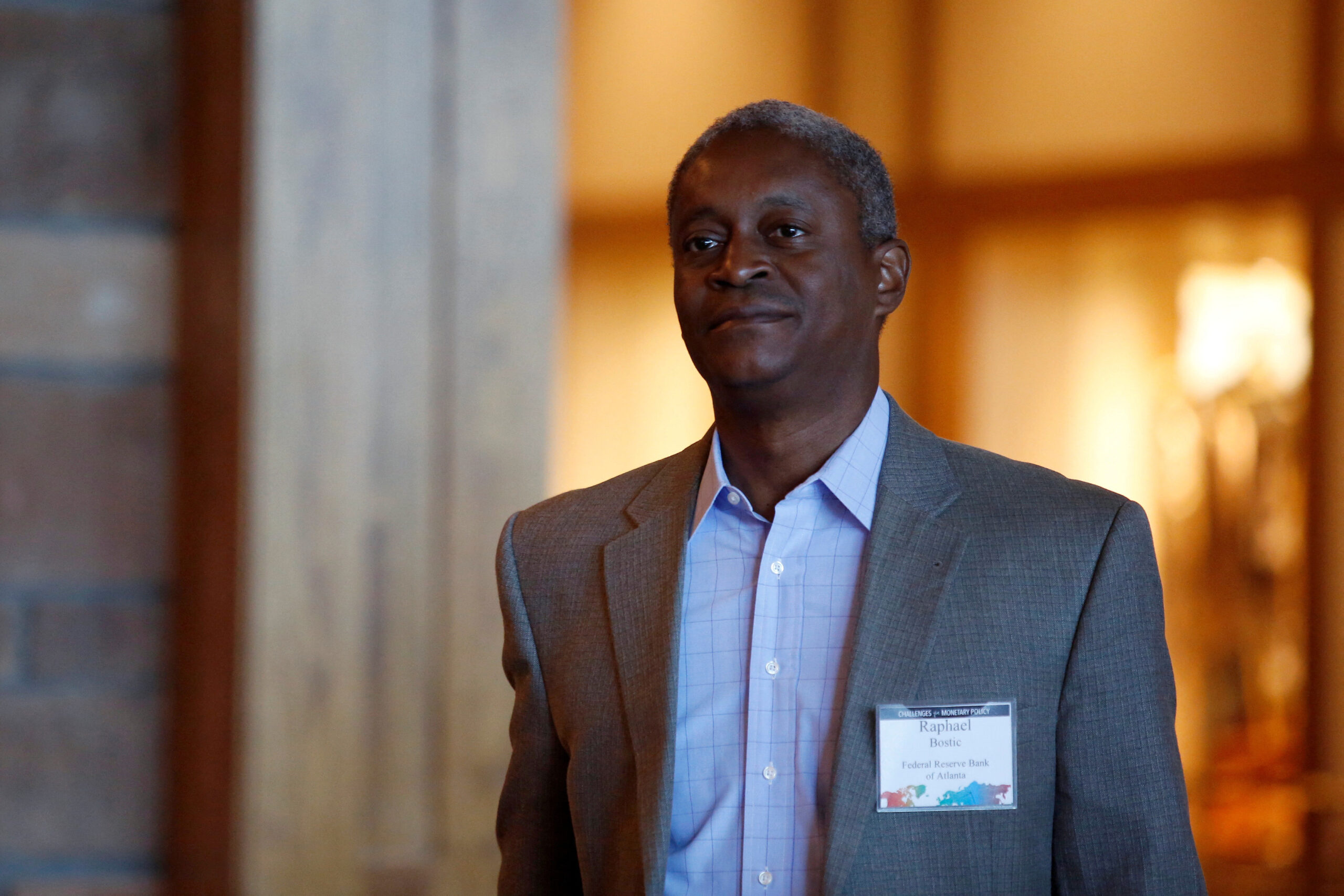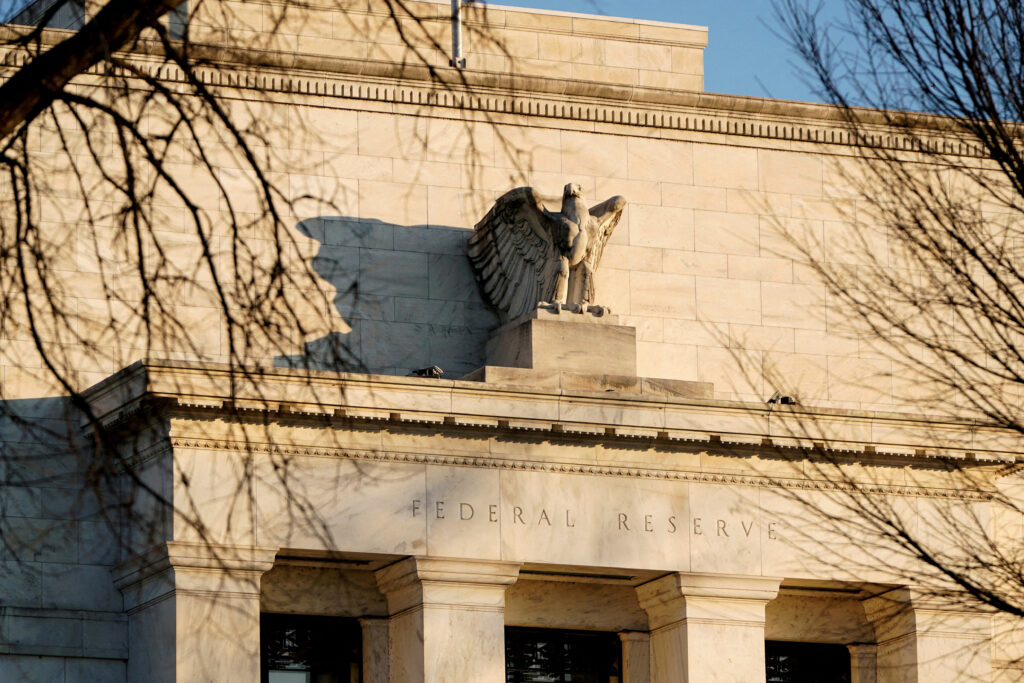WASHINGTON – On Monday, U.S. Federal Reserve policymakers said their large half-point rate cut last week was meant to try to sustain what they see as an emerging and healthy balance in the economy, with inflation headed towards the Fed’s target rate and unemployment near the level consistent with stable prices.
In remarks this morning three reserve bank presidents said they supported last week’s rate cut as an acknowledgment that current policy is putting too much pressure on the economy at a time when cost pressures are receding and risks to the job market rising – circumstances that would make a more “neutral” rate of interest appropriate.
Both inflation and unemployment levels are close to the Fed’s goals, yet “rates are the highest they’ve been in decades. It makes sense to hold rates like this when you want to cool the economy, not when you want things to stay where they are,” Chicago Fed President Austan Goolsbee said in remarks released on Monday.
“I am comfortable with a starting move like this – the 50 basis point cut in the federal funds rate announced last Wednesday – as a demarcation that we are back to thinking more about both sides of the mandate,” Goolsbee added. “If we want a soft landing, we can’t be behind the curve.”
The dual mandate refers to the Fed’s congressionally set goals of maintaining the lowest level of unemployment consistent with stable prices, which the central bank defines as an annual 2% increase in the Personal Consumption Expenditures price index.
The PCE on an annual basis was 2.5% as of July but is expected to continue slowing, a central point in the discussion of whether the Fed might cut a half point again at its November meeting or scale back to a quarter-point reduction.
PCE data for August will be released on Friday.
The current 4.2% unemployment rate as of August is at the level Fed policymakers at the median see as consistent with steady inflation.
Atlanta Fed President Raphael Bostic said he felt the economy was closing in on its “normal” level for both key statistics faster than he expected, and that monetary policy should adjust as well from the current tight credit stance.
The half-point cut last week was an appropriate way to kick off that process, he said, though the Fed needn’t go on a “mad dash” to lower rates amid what he described as a “robust” discussion of how far and fast borrowing costs should decline.
“Progress on inflation and the cooling of the labor market have emerged much more quickly than I imagined at the beginning of the summer,” said Bostic, a voter on rate policy this year, in comments to the European Economics and Financial Centre. “At this moment, I envision normalizing monetary policy sooner than I thought would be appropriate even a few months ago.”
Minneapolis Fed President Neel Kashkari in remarks published this morning and comments to CNBC said he agreed the half-point cut was appropriate. However, he also could have supported a quarter-point reduction.
Regardless, he said he felt two more quarter-point cuts were likely warranted by year’s end because “the balance of risks has shifted away from higher inflation and toward the risk of a further weakening of the labor market.”
Even with the half-point cut, the benchmark rate’s current range of 4.75% to 5% “remains tight.”
DIVIDED OUTLOOK
Financial market reaction to officials’ remarks was muted, and market pricing for the Fed’s next move at its November 6-7 meeting remained nearly evenly divided between a quarter-point cut or a second half-point reduction.
Last week, the Fed’s action reduced a policy rate that had been held at a quarter-century high for 14 months as policymakers waited for solid evidence that inflation, which spiked to a 40-year-high in 2022, was returning to the 2% target.
Bostic said that evidence came in recent data showing inflation running below 2% by some measures and concentrated in housing.
“Inflation has fallen faster than I had expected,” he said, with business contacts reporting that pricing power had “all but evaporated.”
While all three officials said they supported the Fed’s action last week and agreed policy was too tight for the state of the economy, their comments also showed the emerging debate over how quickly the central bank should return policy to a neutral level – where it neither stimulates nor restricts the economy – and indeed over what that level might be.
The median policymaker at the Fed sees the “longer run” federal funds rate as 2.9%, but for any given set of circumstances, the short-term neutral rate could be above or below that.
Bostic said he thought it was likely in a range of 3% to 3.25%, but also that the issue was a subject of “robust” debate among a group of policymakers with a broad range of opinions.
There is “a fair amount of dispersal of views” among policymakers, Bostic said. “It’s important no one thinks we’re in a mad dash to get to some neutral level, given the amount of uncertainty in the economy. Being more patient will be more valuable…The range of views about the path moving forward and where the neutral rate is – it’s robust and it is going to be quite interesting.”
(Source: ReutersReuters)
Kevin Putnam is a financial journalist and editor based in New York. He specializes in editing news and analysis related to U.S. stock market. Read Full Bio










